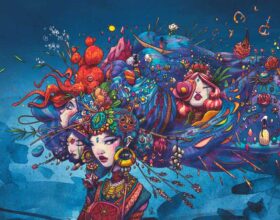Exclusive Interview With Ingrid Baars, 2nd Prize Winner of the iCanvas Digital Art Award, 2023 Beautiful Bizarre Art Prize
What makes up a face? While many might answer that the eyes and mouth make a basic face, other parts are needed for a more realistic face. In fact from a scientific standpoint, newborns understand a face by having the correct presentation of eyes and mouths where they should be. But what about the presentation of these parts on a head? Our genetics dictate where these will end up, and surgeries can alter them, but leave it to the real artists to create faces based not on beauty standards but by artistic standards.
With the myriad of combinations of facial features, the human face becomes a constellation of possibilities and that is exactly what Ingrid Baars does in her pieces. Sorting through pictures of models, the Dutch artist plucks mouths, noses, eyes, among other aspects to create faces that offer an ethereal visage that captivates the viewer. But don’t just take my word for it when Ingrid can tell you herself!
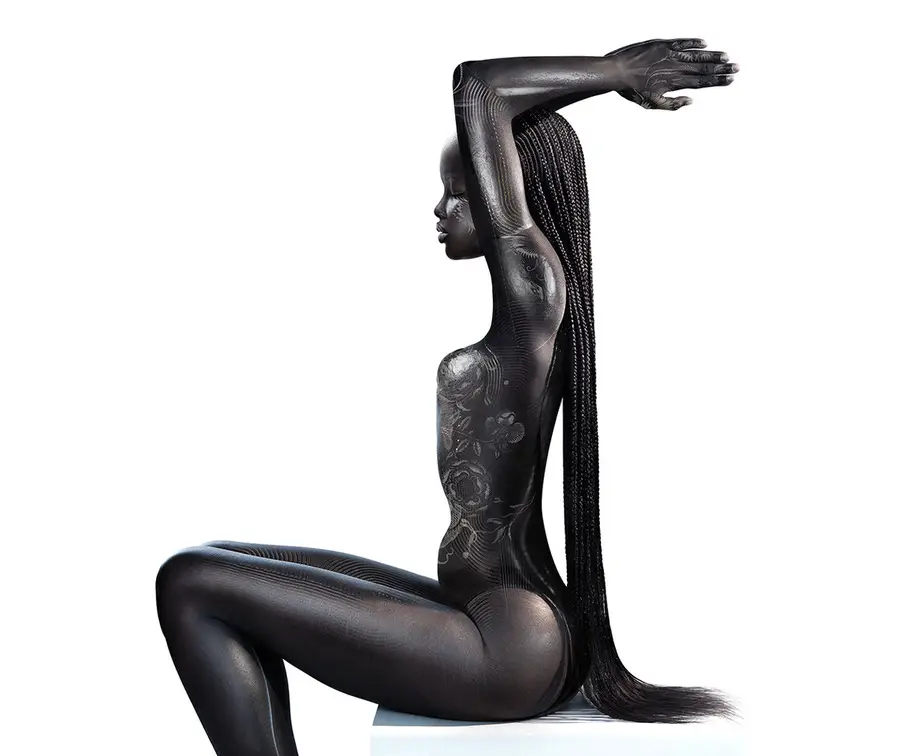
Exclusive Interview with Ingrid Baars
Why did you pursue art as a career? What made you want to graduate from Willem de Kooning Academy?
During my childhood, my love for artistic expression was evident. Drawing and crafting things with clay was what I loved most. I found myself sketching girls and shaping animal figures from clay. Receiving encouragement from others, like my grandfather and parents instilled a sense of confidence in my artistic abilities. However, it wasn’t until I reached the age of sixteen or seventeen that I experienced a profound sense of passion and excitement.
It was during this period that I delved into photography for the first time. I captured images of friends and family, with my mother, who was a model at the time, being one of my early subjects. Simultaneously, I embarked on my journey at the Academy of Arts, where I developed a deep-seated enthusiasm for drawing. Both photography and drawing evoked a sense of magic within me, and I vividly remember the intense focus that enveloped me during those moments.
I guess it’s always been clear to me that art was my calling because I loved it from the beginning. I’m glad I followed the path of doing what I loved, and still love most.
It’s not enough to be talented. You need to persevere and believe in yourself.
Ingrid Baars
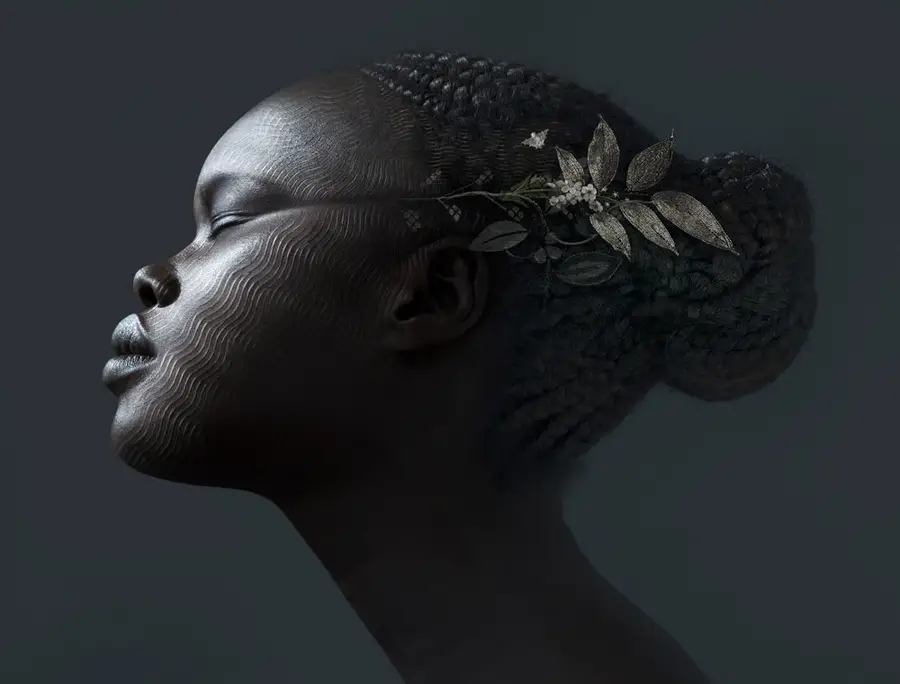
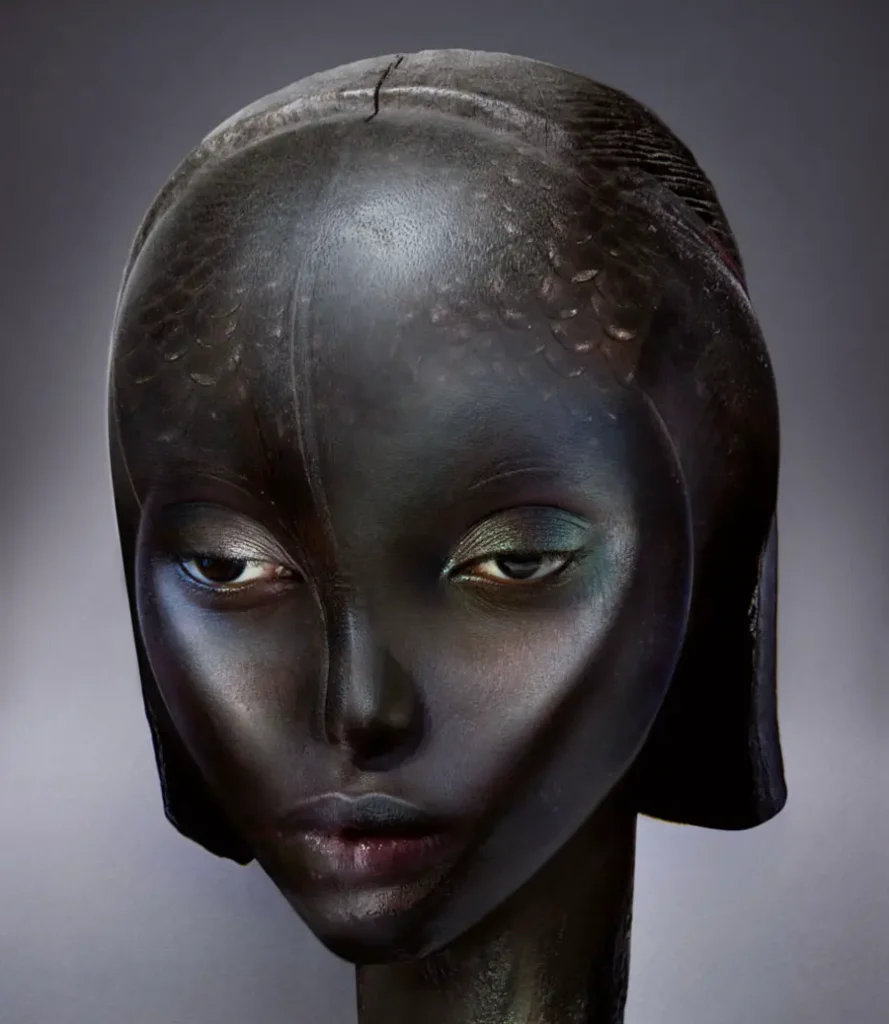

Tell me about the moment you realized you no longer wanted do commercial assignments and shifted your focus on your artistic career. Were you worried about failure? Did you have to break ties with anyone to pursue your own interests?
After completing my education at the Academy of Arts at the age of 22, I embarked on a career as a freelance illustrator and photographer, dedicating a decade to this journey. At the same time, I continued to work on my personal projects and began showcasing in group exhibitions. As my body of work gained strength, I started having solo exhibitions alongside my commercial stuff.
During this time, I couldn’t handle the loneliness and financial insecurity that can come with being an autonomous artist with total freedom, so I held onto my commercial assignments. But in 2010, I naturally transitioned into the next phase and stopped with all commercial activities. I never gave it much thought. It was just the next logical step.
I got more and more annoyed by the assignments I had to do and just wanted to make my own work. I was very eager to work on my own series and didn’t feel nervous about anything anymore. The time was just right. As an illustrator, I always worked with an agent so I had to break ties with the agency but this was a smooth process.
It’s not easy to be an independent artist though. It’s not enough to be talented. You need to persevere and believe in yourself. You must be able to cope with many setbacks and just keep going. But I wouldn’t want it any other way.
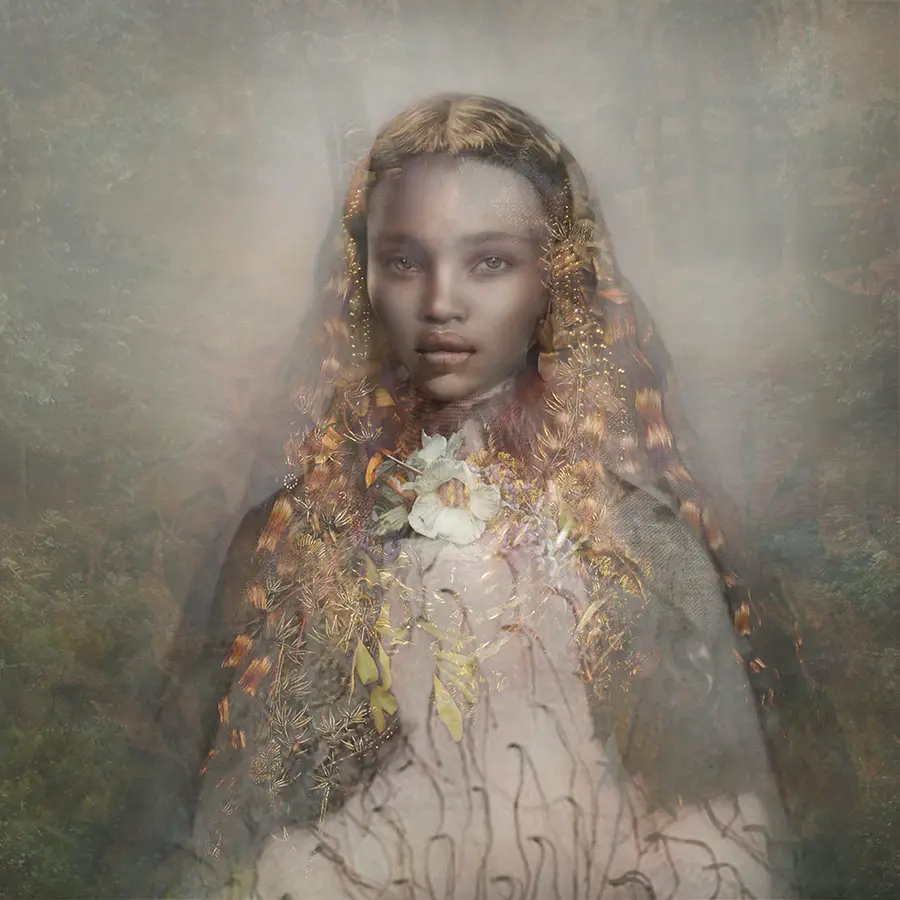
Tell me about your artistic process. I understand your process begins with taking photos.
Each new piece represents a unique journey. I avoid recurring patterns, continually exploring new territories. After completing a piece, retracing the steps that led to the final result can be challenging, but reflects my commitment to avoiding artistic monotony.
I usually start by gathering a diverse range of photographic materials, often fragments from prior images I’ve photographed. I keep these rough shots untouched in my archive until I start a new portrait. This assortment includes subjects such as studio-shot eyes, noses and other facial features of models, fragments of sculptures, and anything inspiring from a wide spectrum of sources like flowers and plants, stuffed birds or jewellery, textures, fabrics, patterns, even Egyptian artifacts. [it is] a ‘mishmash’ of things I tend to bring together in my computer when I create a series of portraits with these ingredients.
I recently spent a whole day at The Louvre, taking pictures of anything that caught my eye and took hundreds of pictures at the Field Museum when I was in Chicago. It is these elements I combine on my computer to start building a face.
During this first phase of the process, it’s mostly a matter of searching. As a portrait slowly comes to life, I try to be as open and experimental as possible, tuning in on what seems like a failure and then responding to that. During this process, I keep screenshots of the moments in-between.
Sometimes this phase takes days and there’s usually a moment where I lose faith in the positive outcome. I always get the feeling somehow this time it just sucks, until suddenly, seemingly out of nowhere, a combination of all the above-mentioned elements seem to fit and I feel a connection with my subject. I don’t have another way to describe it other than magic. It’s so rewarding.
Throughout the process, I find myself operating in a dimension, where emotions and practical considerations engage in an ongoing dialogue where emotions and pragmatic thoughts try to make something good together. This process of harmonizing the conscious and unconscious aspects of my creative mind is integral to my work, and I believe, to all artists.
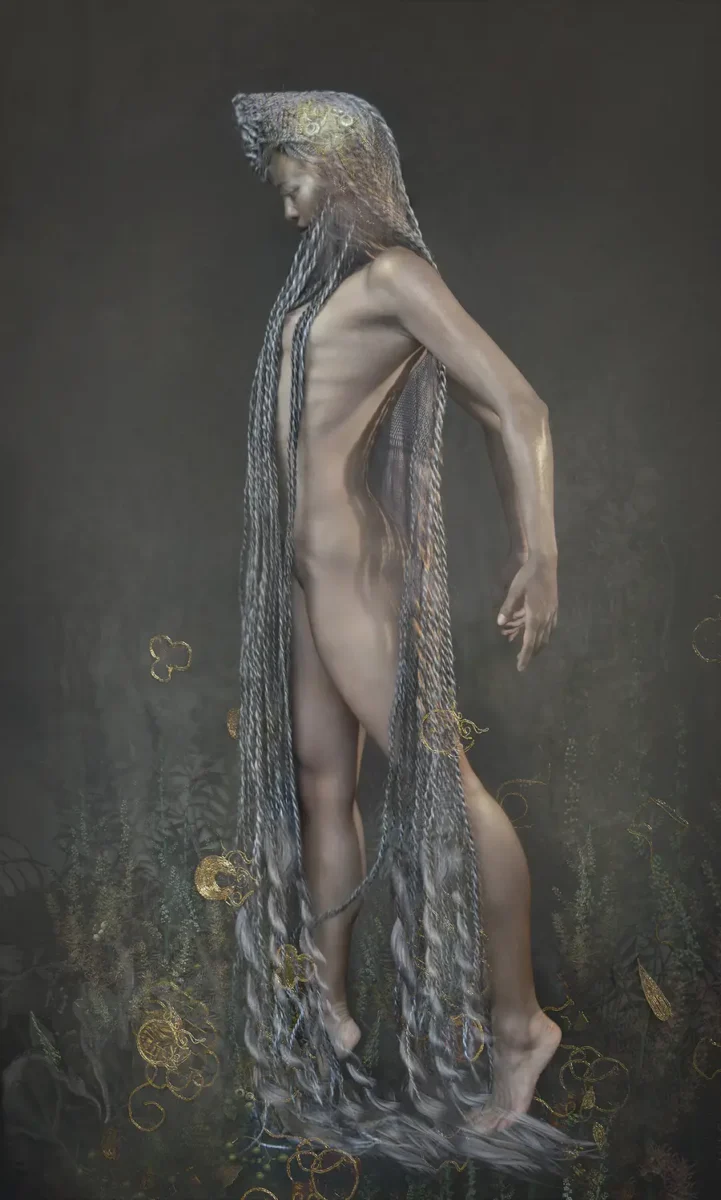
How long does an image usually take you to complete? How many steps are involved?
Usually about a month. Sometimes much faster, sometimes slower.
I can’t say how many steps, but it always involves taking pictures either at my studio or in a museum or just anywhere. Then the rough search and eventually when a portrait arises from the chaos I spent a lot of time in, finalizing and working on all details in depth.
I’ve read that you seek out lavish artifacts from curio collectors to inspire your pieces. Tell me about one of your favorite objects you’ve included, or been inspired by, in your pieces.
I don’t have a singular favourite object that stands out above the rest, but I’m deeply fascinated by several categories of artifacts that have consistently inspired my work. Among these, Ancient Greek and Roman sculptures have a timeless allure. I’ve often incorporated elements of their aesthetic into my pieces. Similarly, Fang sculptures have been a wellspring of inspiration for me.
How would you describe your art style? Your pieces range from appearing as sculptures to photo collages. Even the way your figures are depicted is set in an array of different techniques and styles.
I’d classify my work as digital collage. The women depicted in my art are not real; each portrait is a fusion, a synthesis of many different people. For instance, when creating the face, especially the eyes, I use small parts from different eyes. It’s not a matter of overlaying different eyes on top of one another; rather, I construct a new, unified face from these individual components, resulting in a visage that not existed previously.
I create two-dimensional artwork, but my aspiration is to imbue my portraits with the potential to be perceived as three-dimensional sculptures.
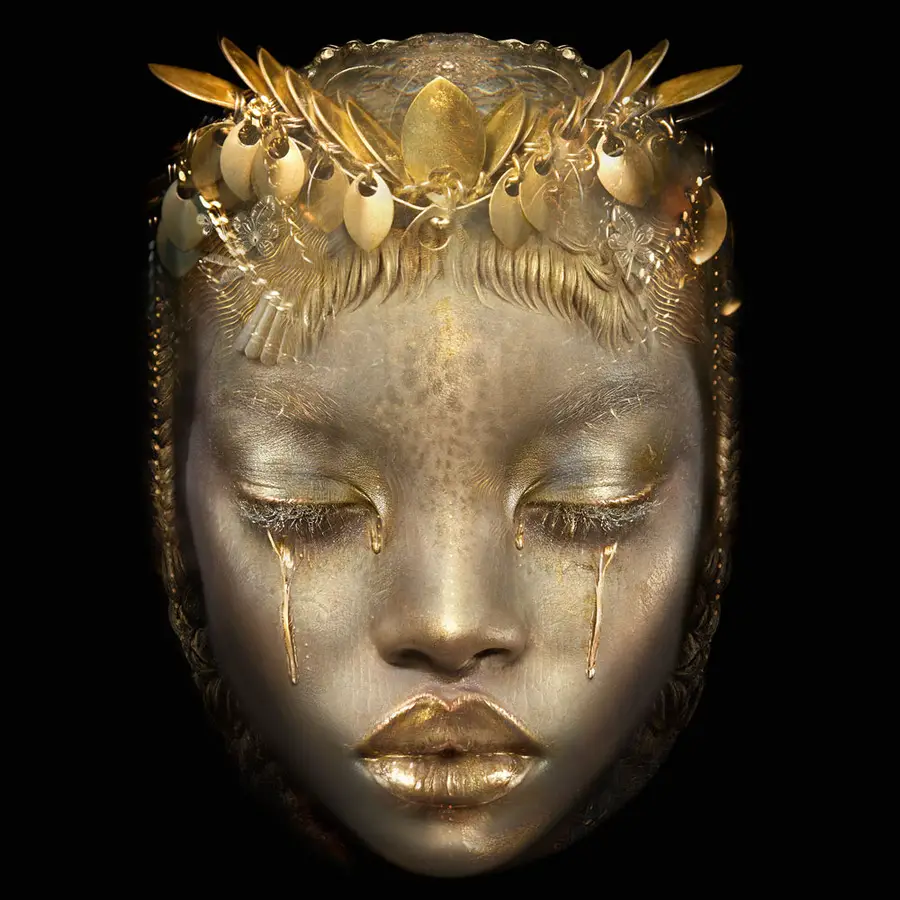
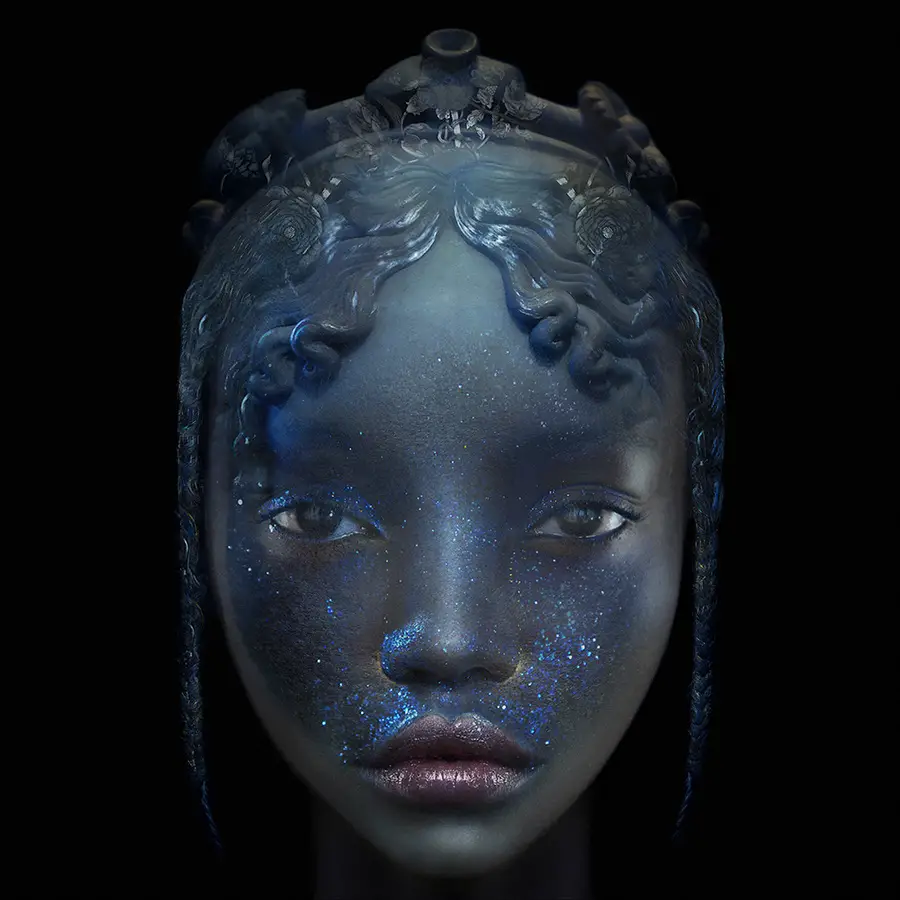
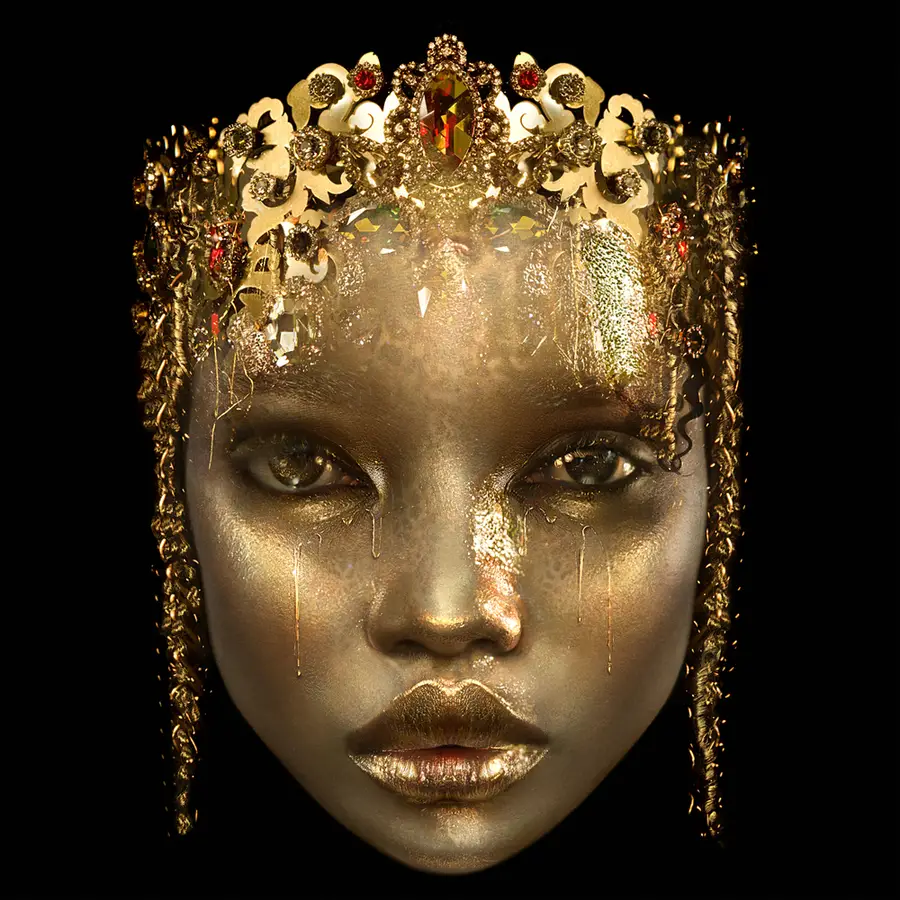
Who or what has been the single most important influence for your work today? Who are some of the other artists that have influenced you?
In all honesty, I’ve never really had role models, but I can’t deny the impact of several artists, designers, and musicians, especially during my early years. Artists like Bjork, Erwin Olaf and the early photo manipulations of Inez van Lamsweerde left me inspired and influenced.
Fashion-wise, the unconventional designs of Jean Paul Gaultier and Vivienne Westwood, along with Alexander McQueen’s creations, have always fascinated me. Although in the past some associated my work with Guy Bourdin, I’ve never considered him a role model. My true influences came from artists like Pierre & Gilles, Marlene Dumas and Man Ray to name but a few.
I have great admiration for some of the Northern Renaissance artists, Lucas Cranach, Jan van Eyck, Hans Memling, and Rogier van der Weyden. The emotional depth in their work have certainly left their mark on my creative journey. And I can’t forget the greats like Da Vinci and Sandro Botticelli – they will always be inspiring to me.

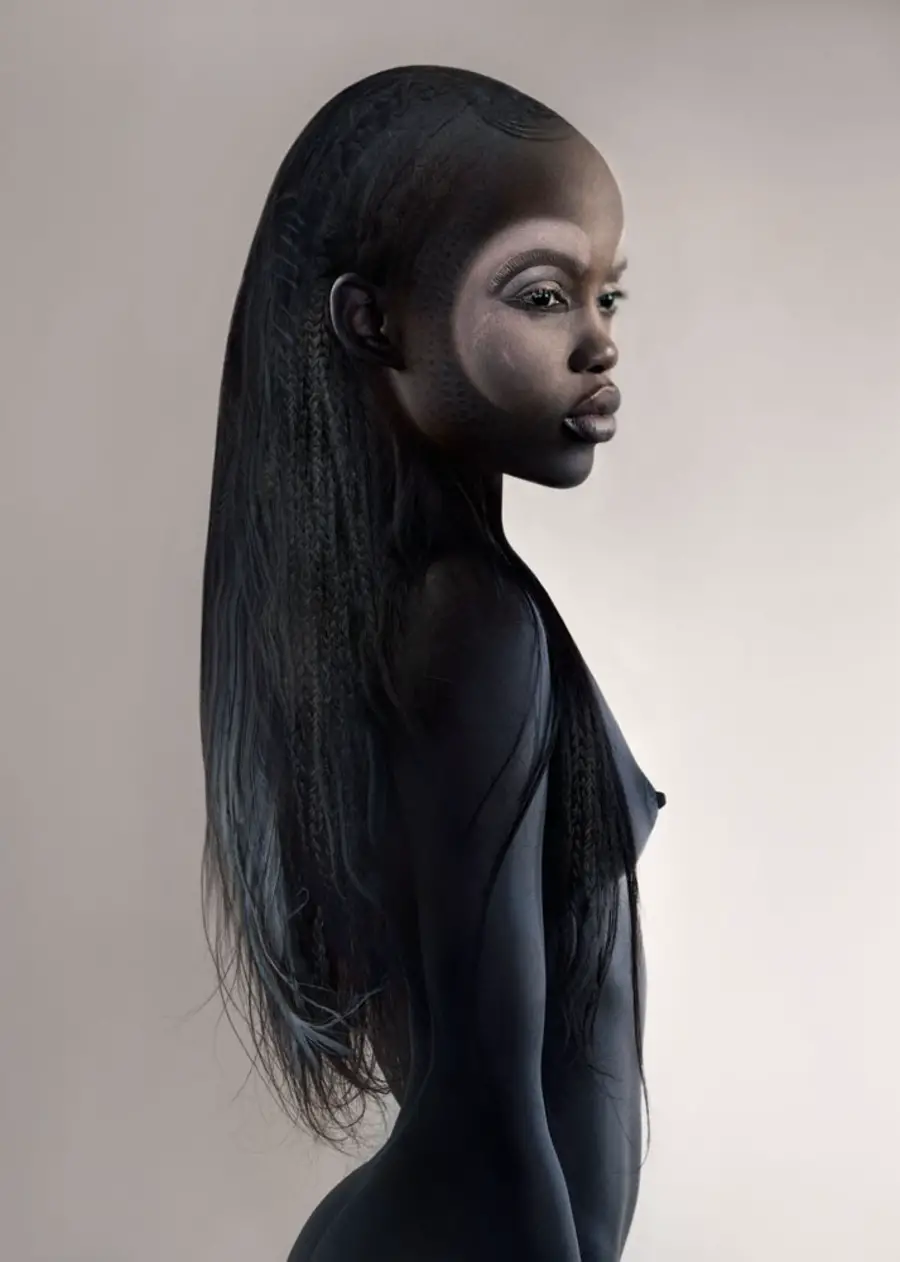
Tell me about “Rose”. What inspired this piece and how long did it take you to complete?
I found myself gravitating more and more towards the image of the (black) Madonna and I decided to explore this phenomena in the Christian context as well as in the context of a more primeval mother figure; a probable precursor to the Christian Mary/Maria Magdalene.
My interest lies in the powers vested in them as I see the analogy to what I imbue in my images. The Madonna’s I create harbor the suffering, the beauty, the power and the comfort.
‘Rose’ is my most recent Black Madonna.
‘Rose’, as with my other Black Madonna pieces, is meant to take heart from, to give strength and provide consolation, to be receptive to our suffering and our pain, she is compassionate and empathetic.
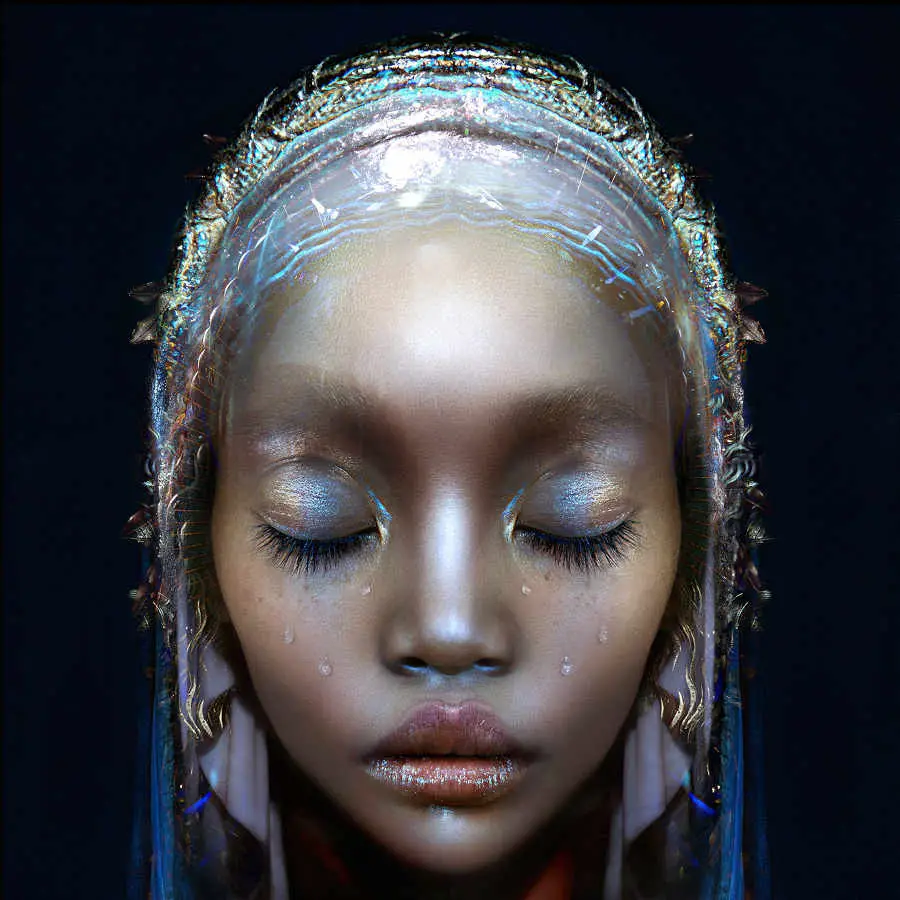
Nikon D850, iMac, Photoshop
2nd Prize Winner
iCanvas Digital Art Award Beautiful Bizarre Art Prize 2023
Why did you enter the Beautiful Bizarre Magazine Art Prize?
I participated in the BB Art Prize because I find the quality of the entries to be high, and because BB always generates a lot of publicity. Moreover, it’s a very well-organized and highly dedicated, friendly organization.
What do you feel you have gained from this experience?
Many positive responses and increased recognition and appreciation for my work.
Would you recommend it and encourage others to enter? If so, why?
Yes, I would. Because it helps on the journey as an artist.



